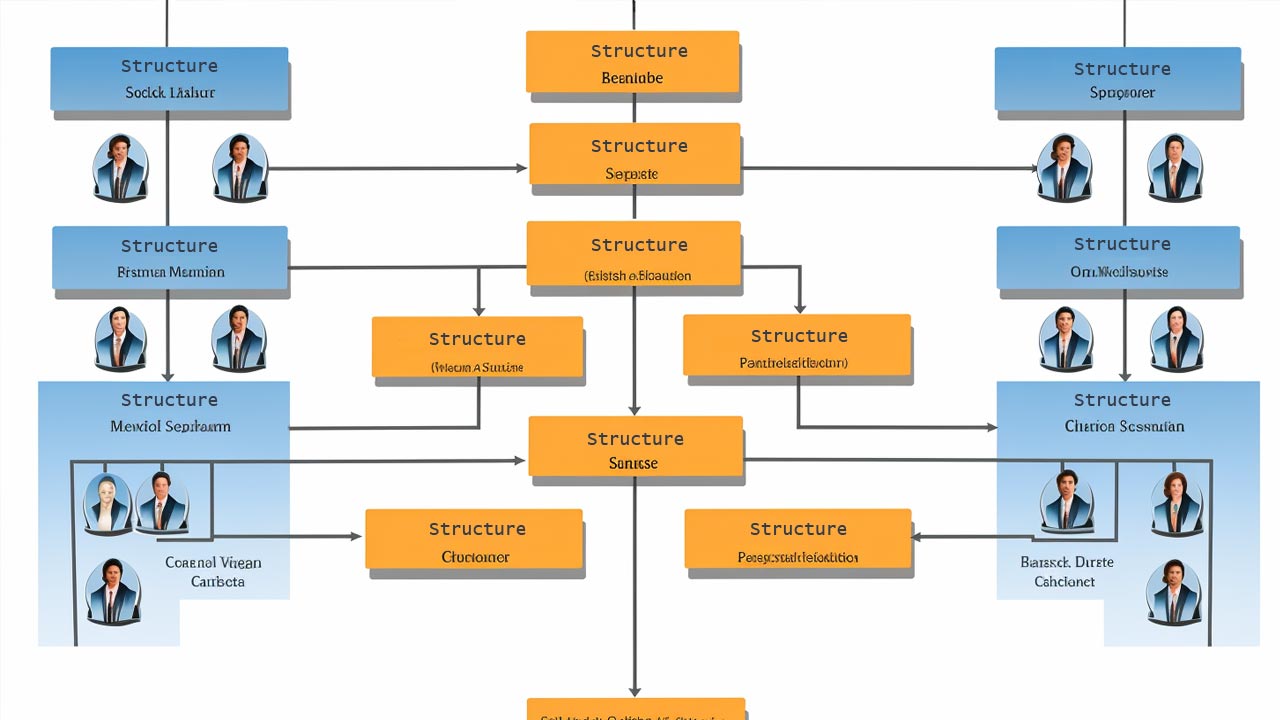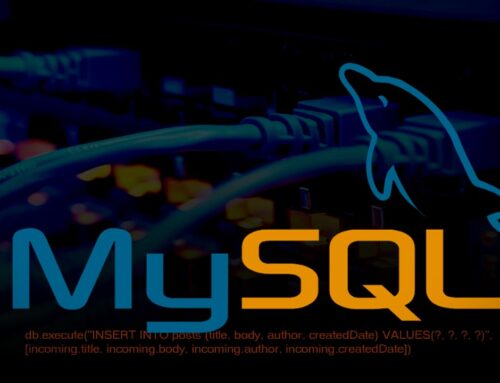In this comprehensive guide, we’ll walk you through the significance of organizational structures, the various types available, and how you can identify which one aligns best with your business needs. This isn’t just a theoretical overview; we’ll delve deep into statistics, expert opinions, and industry-specific language to ensure that you, as a business owner or leader, have the essential information at your fingertips.
Every business, regardless of its size, needs a solid foundation to flourish. One of the primary backbones of this foundation is its organizational structure. An effective organizational structure streamlines operations, fosters communication, and defines roles and responsibilities. For small businesses, in particular, where resources are limited and adaptability is crucial, getting the organizational structure right can be the difference between success and stagnation.
What Organizational Structure is Right for Your Small Business?, How to Determine the Right Structure for Your Business.
Table of Contents
- Understanding Organizational Structures
- Types of Organizational Structures
- Determining the Right Structure for Your Business
- Frequently Asked Questions
- Final Thoughts
- Sources
Understanding Organizational Structures
At the heart of any thriving enterprise lies its organizational structure. To understand its significance, one must first grasp what it entails. An organizational structure is essentially the architecture of a company. It determines how roles, power, and responsibilities are assigned, controlled, and coordinated. Moreover, it dictates how information flows throughout the different levels of management.
Why is Organizational Structure Important?
- Clear Direction and Responsibilities: Just as a skeleton provides the framework for the human body, an organizational structure provides a clear direction for tasks within a business. It ensures that every employee knows their roles, responsibilities, and whom to report to.
- Efficiency in Operations: A well-defined structure minimizes duplications and overlaps in roles. It ensures resources – both human and material – are used efficiently. As noted by management consultant Peter Drucker, “Efficiency is doing things right; effectiveness is doing the right things.” A sound organizational structure ensures both.
- Enhanced Communication: With a clear structure in place, communication becomes more streamlined. Employees know the official channels for different types of information, reducing misunderstandings and miscommunications.
- Flexibility and Adaptability: Modern organizational structures are designed to be adaptable. As market conditions change, companies can restructure to address new challenges or leverage new opportunities.
- Employee Motivation and Growth: In structured organizations, career paths are clearer. Employees understand what’s required to progress to the next level, which can serve as a motivation factor.
Factors Influencing Choice of Structure:
The choice of an organizational structure isn’t arbitrary. It’s influenced by several factors:
- Business Size: A startup with a handful of employees may not need a complex hierarchical structure, whereas a multinational corporation would.
- Business Goals: A company focusing on a single product might have a different structure than one diversifying into various product lines or markets.
- Organizational Culture: A company that values open communication and collaborative decision-making might prefer a flatter structure, while one that respects clear chains of command might adopt a more hierarchical approach.
- External Environment: External factors such as market conditions, competition, and even cultural nuances of a geographical region can influence how a business is structured.
Evolution over Time:
It’s crucial to remember that organizational structures aren’t static. As businesses grow, expand into new markets, or adapt to changing environments, their structures might need an overhaul. Kodak, for instance, had to significantly restructure its operations in the face of digital photography’s rise. Such evolutions are natural and necessary for survival in a competitive landscape.
Understanding organizational structures is fundamental for business leaders. A thoughtful and well-implemented structure can lead to efficient operations, clear communication, adaptability to change, and motivated employees. On the contrary, a poorly conceived structure can stifle growth, foster confusion, and lead to inefficiencies.
Types of Organizational Structures
In the vast realm of business management, the organizational structure stands as a blueprint detailing how a company arranges its lines of communication, authority, rights, and duties. Its significance is underscored by the fact that it impacts everything from daily operations to strategic decision-making. There are several types of organizational structures, each with its own set of advantages and limitations. The choice largely depends on the company’s size, industry, goals, and challenges.
Functional Structure
Often referred to as a hierarchical structure, the functional organization is the most common. In this setup, the company is divided into different departments based on functions such as marketing, finance, human resources, and production.
- Pros:
- Specialization allows for deepening of expertise in each domain.
- Clear hierarchy simplifies decision-making processes and reporting.
- Cost-effective as resources are centralized within specific functions.
- Cons:
- Reduced communication between departments might lead to silos.
- Limited flexibility and slower response to market changes.
Divisional Structure
Under the divisional structure, the organization is sectioned off into self-contained divisions, which operate somewhat like individual businesses. These divisions can be based on products, services, geographic locations, or individual markets.
- Pros:
- Enables a focus on specific markets or product lines.
- Facilitates quick changes in response to specific market needs.
- Profitability of each division can be easily tracked.
- Cons:
- Duplication of resources across divisions.
- Potential rivalry between divisions.
Matrix Structure
In a matrix structure, employees have dual reporting relationships – they report both to the functional manager and the product manager. It’s a complex structure that tries to capitalize on both functional and divisional forms.
- Pros:
- Enhances flexibility and balances company priorities.
- Facilitates better communication across functions.
- Encourages employees to utilize a diverse skill set.
- Cons:
- Dual authority can lead to confusion and conflicts.
- More time-consuming management effort due to complex relationships.
Flat Structure
Also known as a horizontal structure, the flat model reduces or completely eliminates middle management. Most employees are on the same level, and there’s a direct line to executives.
- Pros:
- Promotes faster decision-making due to reduced bureaucracy.
- Facilitates better communication and collaboration.
- Empowers employees and encourages innovation.
- Cons:
- As a company grows, this structure might become unsustainable.
- The lack of clear hierarchy might lead to role confusion.
Team-Based Structure
In this model, the entire organization is made up of teams that work on specific projects or tasks. Once their project is completed, the team disbands, and its members join other teams.
- Pros:
- Encourages collaboration and knowledge sharing.
- Enhances adaptability and responsiveness to change.
- Teams can be formed to address specific challenges.
- Cons:
- May lack clear direction and consistent management.
- Potential for team conflicts.
Network Structure
Modern and flexible, the network structure relies on outsourcing major functions to third parties. It’s particularly popular among companies in the digital domain.
- Pros:
- High degree of flexibility.
- Reduces operational costs.
- Enables a company to focus on its core competencies.
- Cons:
- Dependency on external parties might pose risks.
- Can result in a loss of control over certain operations.
Choosing the right organizational structure is paramount for any company’s success. It sets the tone for its culture, decision-making processes, communication patterns, and adaptability. While no one-size-fits-all solution exists, understanding the nuances of each structure can significantly aid in making an informed decision tailored to a company’s unique needs. As the business environment continues to evolve, organizations should also be prepared to reassess and adapt their structures accordingly.
Determining the Right Structure for Your Business
Selecting the most suitable organizational structure for your business is crucial. This decision will influence your company’s efficiency, communication pathways, growth potential, and overall success. A well-thought-out structure can pave the way for streamlined operations, while a mismatch can result in miscommunication, redundancy, and confusion. Here’s how to evaluate and choose the best structure for your unique circumstances.
1. Assess the Nature and Size of Your Business
The type of business and its size can provide an initial direction. For instance:
- Startups or small businesses often benefit from a flat structure due to fewer employees and a need for agility.
- Manufacturing businesses might opt for a functional structure to streamline specific operations.
- Diverse product lines or markets often require a divisional or matrix structure to handle the varying needs of each segment effectively.
2. Define Your Business Goals and Vision
Where do you see your business in the next 5, 10, or 20 years? The structure you select should align with these aspirations.
- If rapid scaling and growth are on the horizon, opt for structures that can adapt quickly.
- If the emphasis is on product diversification, a divisional approach might be ideal.
3. Evaluate Your Current Challenges
Understanding the challenges you’re currently facing can provide insights into structural needs. For instance:
- If departments are working in silos and collaboration is minimal, introducing aspects of a matrix or team-based structure might help.
- If decision-making feels sluggish due to bureaucracy, considering a flatter approach might be beneficial.
4. Consider the Nature of Your Workforce
A younger, dynamic workforce might prefer flexible structures with room for innovation and lateral communication. In contrast, a larger, more traditional employee base might feel more at ease with clear hierarchies.
5. Factor in External Influences
Geography, industry norms, regulatory environments, and competition can all influence your choice.
- Businesses that span multiple geographic locations might prefer a geographical divisional structure.
- If your industry is heavily regulated, you might need a structure that allows for stringent oversight and compliance.
6. Seek Expert Input
Consult with organizational development professionals, industry peers, or business consultants. Their external viewpoint, combined with your internal insights, can guide you towards the most effective structure.
7. Maintain Flexibility
Recognize that the chosen structure isn’t set in stone. As your business evolves, be prepared to reassess and realign your organizational structure. Flexibility is vital in ensuring your structure supports rather than hinders your growth.
8. Implement and Review
Once you’ve chosen a structure, implement it with clarity. Ensure all employees understand their roles, responsibilities, and communication channels. After a set period, review its effectiveness. Gather feedback from different departments to understand if the structure is aiding in meeting business objectives.
Your organizational structure will either be the wind beneath your wings or the weight that holds you back. Hence, it’s crucial to approach this decision with careful consideration, factoring in both your present circumstances and future aspirations. Remember, no structure is perfect; it’s all about finding the best fit for your unique business needs and being willing to adapt when necessary.
Frequently Asked Questions
Final Thoughts
Selecting an appropriate organizational structure for your small business is paramount. This decision shapes communication flows, decision-making processes, and the overall efficiency of operations. As you chart your business’s trajectory, ensure that your structure remains adaptable. In the dynamic world of business, adaptability isn’t just a luxury; it’s a necessity.
Sources
- Harvard Business Review – Organizational Structures and Their Impact
- Deloitte Insights – Organizational Models: A Global Study











Leave A Comment